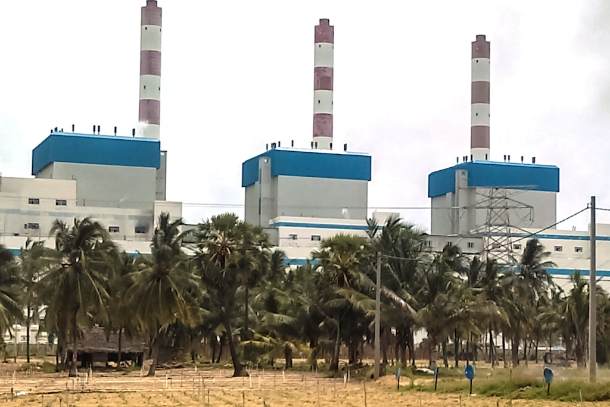Villagers claim Chinese-funded coal power plant is affecting their health and livelihoods

Lakvijaya Coal Power Plant was commissioned in 2011 under the Mahinda Rajapaksa regime. Villagers claim ash emissions have become a health issue. (ucanews.com photo)
Sri Lankan farmer Sebastian Fernando used to cultivate beetroot before his livelihood faded away in front of his eyes as his harvest became covered in ash.
Children in the remote village of Norochcholai, 144 kilometers north of Colombo, get rashes on their hands and bodies.
And fishermen complain that their catches have become smaller and that they cannot go to sea when coal is unloaded from nearby ships.
They all blame the Lakvijaya Coal Power Plant, the first coal-fired plant in Sri Lanka. It was commissioned in March 2011 after construction began in May 2006.
“When the wind blows from the sea, the whole area is covered with fly ash, with houses and the surroundings looking black,” said Fernando, a father of two.
The government has tried several times to solve the ash problem but farmers and fishermen worry about a sustainable solution.
Most villagers around the Chinese-funded plant mainly depend on cultivation and fishing. A group has filed a case against the plant that is being heard in the Supreme Court. They say that although many people depend on the plant for power, villages cannot die for others.
According to sources, the plant releases 1,000 metric tons of fly ash daily when three generators are in operation. It also releases 100 metric tons of solid ash.
Lakvijaya was built at a cost of US$1.34 billion. Funding was provided by the Chinese government on a long-term low interest rate. Coal is brought to the area by ships anchored about four kilometers from shore. It is then transferred by barges.
Environmentalists worry about ash as it contains arsenic and other poisonous substances that can enter the water supply. This could lead to serious health issues. Villagers and some doctors suspect the skin problems prevalent among children are a consequence of having the coal plant near the community.
When the plant was being planned, a massive campaign was launched by environmental activists led by the late Bishop Frank Marcus of Chilaw to oppose its location, but President Mahinda Rajapaksa’s regime granted approval.
“We are not against the development, but the area is more open to environmentally friendly energy sources like solar and wind power. We have been pointing out the social and environmental issues,” said Hemantha Withanage, director of the Centre for Environmental Justice.
Environmentalists also claim the plant operated for more than a year without a renewed license from the North Western Environmental Authority (NWEA). The authority recently decided to issue the plant with an environmental protection license after it constructed a wind barrier to prevent ash from escaping.
Sajeewa Chamikara, director of the Environmental Conservation Trust, claims the wind barrier does not meet the requirements for a license. The NWEA does not have the capacity to study the issue and make recommendations, Chamikara said.
According to the International Energy Agency, coal supplies a third of the entire energy used worldwide and accounts for 40 percent of electricity generation.
“If the power plant is decreasing the quality of life, the government should rethink having it in this place,” said Bishop Valence Mendis of Chilaw in his sermon on St. Joseph’s feast day.
Father Ranil Sadaruwan, parish priest of Ilaththadiya that includes Norochcholai, has been using local media to draw attention to the problem. He said the plant has become the root cause of many social and economic issues. Managers of the plant live in luxurious houses and do not feel the suffering of normal villagers, he said in one of his media statements.
Plant manager Indrajit Gallage told media that 95 percent of available preventive methods have been taken in 2018 to minimize the plant’s effects on nature and villagers.
It is planned to issue permits for brick factory owners in Mundalama to receive fly ash for their production.
According to international alliance Endcoal, coal is considered the biggest contributor to anthropogenic climate change. The burning of coal is accountable for creating 46 percent of global carbon dioxide emissions.
